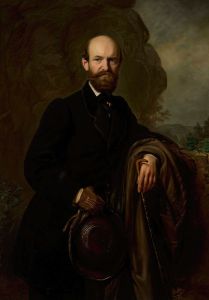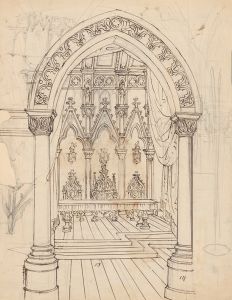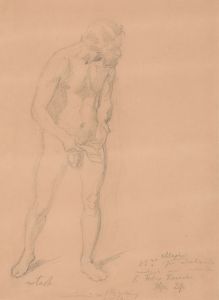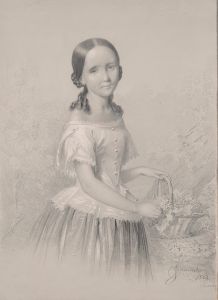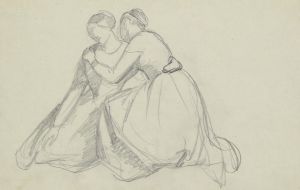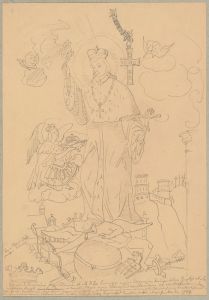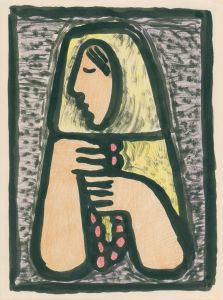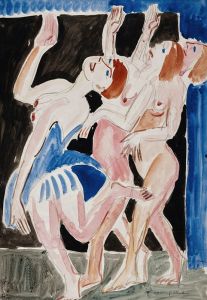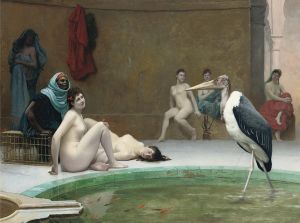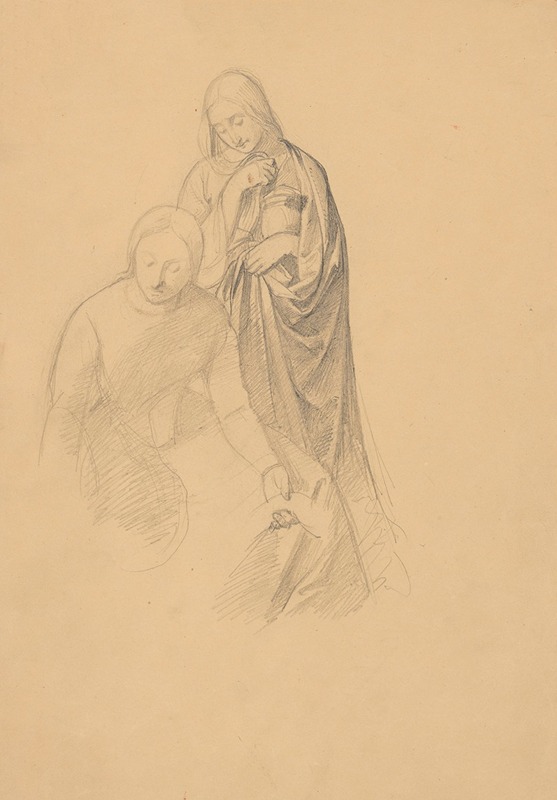
Study of two women to the painting ‘Entombment’
A hand-painted replica of Józef Simmler’s masterpiece Study of two women to the painting ‘Entombment’, meticulously crafted by professional artists to capture the true essence of the original. Each piece is created with museum-quality canvas and rare mineral pigments, carefully painted by experienced artists with delicate brushstrokes and rich, layered colors to perfectly recreate the texture of the original artwork. Unlike machine-printed reproductions, this hand-painted version brings the painting to life, infused with the artist’s emotions and skill in every stroke. Whether for personal collection or home decoration, it instantly elevates the artistic atmosphere of any space.
Józef Simmler was a prominent Polish painter of the 19th century, known for his historical and religious works. One of his notable pieces is the "Study of Two Women to the Painting ‘Entombment’," which serves as a preparatory work for his larger painting, "Entombment." Simmler was born in 1823 in Warsaw, Poland, and he studied art in various European cities, including Dresden, Munich, and Paris, which were significant centers for artistic development during that period.
The "Study of Two Women" is an example of Simmler's meticulous approach to composition and character study. This preparatory work focuses on the depiction of two female figures, likely intended to be part of the larger narrative in the "Entombment" painting. The study showcases Simmler's skill in capturing human emotion and form, which are essential elements in religious and historical paintings. His ability to convey the solemnity and gravity of the scene through the expressions and postures of the women is evident in this study.
Simmler’s "Entombment" is a religious painting that depicts the burial of Christ, a common theme in Christian art. The study of the two women would have been crucial for Simmler to accurately portray the emotions and dynamics of the scene. In religious art, the figures of women, often representing Mary, the mother of Jesus, and Mary Magdalene, are depicted with expressions of grief and mourning, reflecting the sorrowful nature of the event. Simmler’s attention to detail in the study would have helped him achieve the desired emotional impact in the final composition.
The "Study of Two Women" reflects the academic style prevalent in the 19th century, characterized by a focus on realism, anatomical precision, and the use of preparatory sketches and studies to refine the final artwork. Simmler’s work is often associated with the Polish Romantic movement, which sought to express national identity and history through art. His paintings frequently include historical and religious themes, resonating with the cultural and political climate of Poland during his lifetime.
Simmler’s contribution to Polish art is significant, as he was part of a generation of artists who sought to elevate Polish art to international standards. His works are housed in various collections, including the National Museum in Warsaw, which holds many of his paintings and studies. The "Study of Two Women" not only serves as a testament to Simmler’s artistic process but also provides insight into the preparation and thought that went into creating a major religious work like the "Entombment."
In summary, Józef Simmler’s "Study of Two Women to the Painting ‘Entombment’" is an important piece that highlights his skill in character study and composition. It reflects the broader themes of his work and the artistic movements of his time, contributing to our understanding of 19th-century Polish art and its cultural context.







